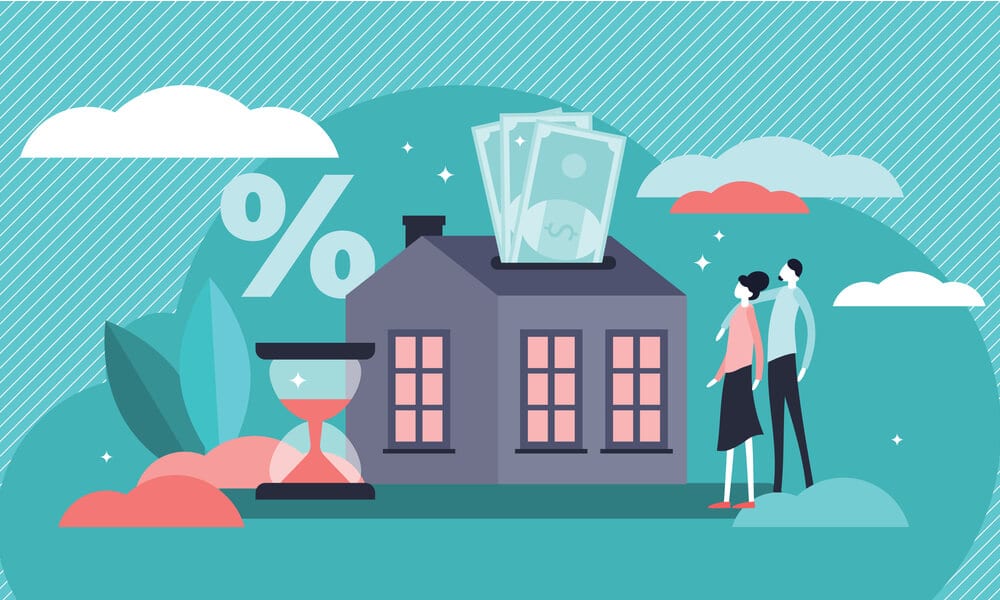Canadian employment is the highest in 40 years but borrowers are showing signs of stress. Statistics Canada (Stat Can) data shows non-bank lenders saw an uptick in early mortgage delinquencies for Q4 2021. However, they were able to maintain a lower default rate than commercial banks. Part of this is due to the thousands of borrowers on mortgage payment deferrals. Borrowers are experiencing stress but the good news is lenders are working with them.
Non-Bank Vs Private Mortgage Lenders
First, a quick note on non-bank lenders, which are often confused with private lenders. Non-bank lenders are highly regulated and include monolines. A monoline is a lender that only lends for mortgages and doesn’t do banking services. If you’ve been to a popular mass-market broker like TrueNorth and taken out one of their THINK Financial mortgages, you went with a non-bank lender.
The private lenders they’re confused with have no regulations and are a last resort. They’re for borrowers who need a short-term solution but can’t borrow traditionally. Borrowing is easy to qualify for but very expensive, since you’ll pay a risk premium. We’ve seen mortgage rates as high as 21% at these lenders, but more common is around the 8% mark. Despite high rates, private mortgages are popular in Ontario, representing 8% of mortgages at last check.
You can get both from a mortgage broker but they’re for different consumers due to cost and risk. A Bank of Canada (BoC) study found monolines offer lower rates than commercial banks and had higher quality borrowers. In contrast, a private lender makes sure the borrower has a big down payment and pays higher rates to look past the borrower’s ability to pay.
Both are useful and have a purpose but they’re very different from each other. Still worth emphasizing, today we’re talking about non-bank lenders, not private lenders.
Canadian Non-Bank Lenders Are Still Deferring A Lot of Mortgages
Canada’s non-bank lenders have thousands of mortgage loans on deferral. They reported 17,700 mortgages on payment deferral at the end of Q4 2021, representing $4.1 billion in value. It’s a 51% reduction from the number of mortgages in Q4 2020 and 49% fewer dollars in value.
Peak deferrals were multiples of this number at non-bank lenders in Canada. In Q2 2020, they held 100,400 mortgages on payment deferral worth $25.4 billion. Currently they’re at a fifth of that number, so it’s a very sharp decline. However, they might be approaching a “new normal” for deferrals. Near-term delinquencies are rising and can change the direction of this trend.
Canada Is Seeing An Uptick In Early Delinquencies For Mortgages
Canada’s non-bank lenders have seen an increase in the number of 30-day delinquencies. They reported 39,613 mortgages in Q4 2021, representing 2.3% of outstanding mortgages. This is an uptick of 33,964 mortgages in Q4 2020, when it represented about 2.0% of outstanding mortgages. The fourth quarter was before rising interest rates, so that isn’t the influence.
Canada’s mortgage delinquencies are often praised for being a smaller share than the US. The US reported 2.3% of mortgages were in arrears in Q4 2021, about the same share as Canada. Most are under the impression Canada is much lower but economists often compare two different numbers.
The US tends to report delinquencies as 30-days or more in arrears while Canada does 90-days or more. Both countries don’t start foreclosures until after 120 days but concern is presented at two different points. The majority of delinquent mortgages don’t reach 90 days in either country. We say it often, but it’s worth mentioning again — banks don’t want your home, they want interest payments.
Canada’s Non-Bank Lenders Outperformed In Severe Delinquencies
Canada’s non-bank lenders reported a sharp decline for mortgages in arrears for 90 days or more. About 0.15% of outstanding mortgages were in arrears for this long as of Q4 2021, down from 0.23% in Q4 2020. To compare to Canada’s banks, the CBA reported 90 day arrears at 0.17% at the end of Q4 2021 and 0.23% for Q4 2020. Non-bank lenders are often perceived as lesser than commercial banks. However, they’re now outperforming when it comes to the low delinquency rate in Q4.
Deferrals are playing a role in mitigating defaults. Lenders always had deferral programs but statistics weren’t reported since use was scarce. Greater awareness of this option is without a doubt helping to reduce severe delinquencies. Also, tight inventory helps to mitigate defaults since a borrower in trouble can sell faster than default if needed.
Having thousands of deferrals may not sound great but it may be a good thing. Borrowers are better informed of the tools they have to prevent complete failure. Mass payment deferrals without reason in 2020 normalized the process for both parties. As rates rise and buyers dry up, deferrals are likely to help mitigate consequences.
